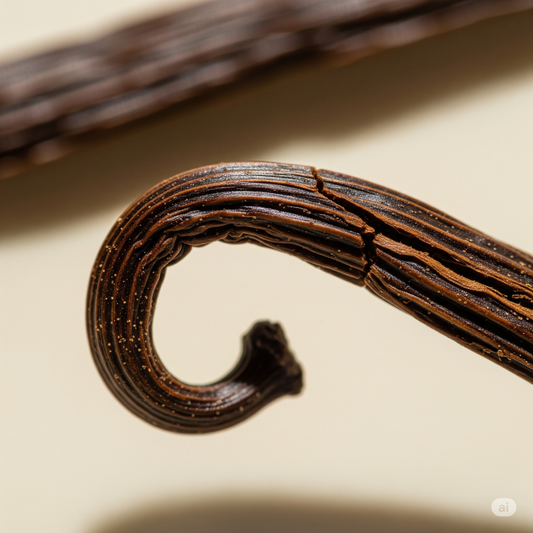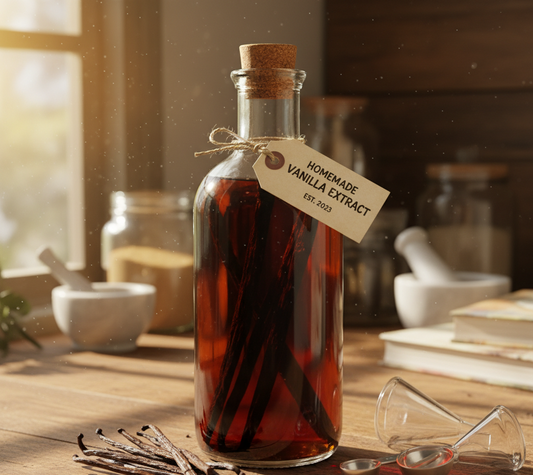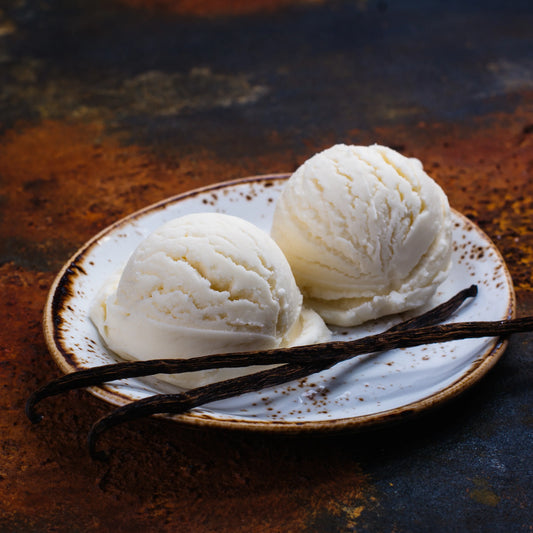Vanilla Showdown: Whole Vanilla Beans vs. Vanilla Extract
Share
The Difference Between Vanilla Beans and Vanilla Extract
Vanilla is the second best used popular flavors in the world. It's used extensively in baking, cooking, and desserts. But what's the difference between using vanilla beans versus vanilla extract? While they both offer that distinctive vanilla taste, they aren't exactly the same. Understanding when to use each will help you unlock the full potential of vanilla flavor.
Vanilla Beans
Vanilla beans are the dried, cured fruit pods of the vanilla orchid plant. Inside these long brown pods are thousands of tiny black vanilla seeds, which is where the flavor is contained. The beans are picked by hand and then cured through an intricate process that develops their characteristic vanilla flavors and aromas. Curing methods vary by region, but generally involve steps like blanching, sweating, drying, and conditioning.
Vanilla beans deliver a robust, multifaceted vanilla flavor that can't be replicated by extract alone. When you cook or bake with whole beans, you're imparting a more nuanced and intense vanilla taste. Beans also add visual interest and texture to recipes. Tiny flecks of the vanilla bean seeds will be present throughout.
Tips For Cooking and Baking with Vanilla Beans
- Split the bean lengthwise and scrape out the seeds. The seeds contain the most concentrated vanilla flavor.
- Infuse milk, cream, or sugar with a split bean. Let it steep for at least 30 minutes to fully infuse the vanilla essence. Discard the bean before using.
- Add a whole or split bean to syrups, custards, puddings, cremes, etc. Remove the bean before serving.
- Bake beans into cookies, cakes, or breads. The beans will melt into the batter, dispersing flavor and speckling it with vanilla seeds.
- Blend beans into smoothies, shakes, and ice creams. Strain out the bean pieces if you don't want texture.
- Use leftover dried bean pods to flavor granulated sugar. Store in an airtight container.
- Make vanilla sugar by storing beans in a jar of sugar. Use it for baking or beverages.
Vanilla Extract
Vanilla extract is made by soaking vanilla beans in a solution of water or ethyl alcohol. This solution draws out the flavor compounds from the vanilla bean. Real, pure vanilla extract contains at least 35% alcohol. Imitation vanilla extract contains synthetic vanillin rather than real vanilla bean extractives. Always choose real extract for the most authentic flavor.
Because it's already been extracted, vanilla extract allows you to get that vanilla taste more conveniently. However, the complex flavor notes you get from a whole bean simply aren't present. Extract works well in any recipe where you want vanilla flavoring but the nuances of the bean aren't as important.
Tips For Using Vanilla Extract
- For most recipes, replace one vanilla bean with 1-2 teaspoons of extract. Start with 1 teaspoon and add more to taste.
- Add vanilla extract at the end of cooking recipes so the alcohol doesn't bake off.
- When adding to liquids like batter or dough, stir or whisk vigorously to disperse the flavor evenly.
- Store vanilla extract in a cool, dark place to preserve freshness. Unopened, it will keep for 3-4 years.
- Avoid using vanilla extract in very hot liquids or in unbaked applications, as the alcohol can create an unpleasant bitter taste.
Should You Use Beans or Extract?
So, when should you opt for vanilla beans instead of extract? Here are some guidelines on what choice you should use according the purpose of you want to use it for.
- Use beans for recipes where you want to highlight vanilla as a featured flavor, like panna cotta or vanilla ice cream.
- Use beans when you want those vanilla bean flecks, like in vanilla sugar cookies.
- Use beans to infuse custards, puddings, curds, and creme based desserts.
- Use beans for savory dishes where you want a floral, gourmet vanilla flavor, like seafood or braised meats.
- Use extract in recipes where vanilla is not the star flavor, like cakes or chocolate chip cookies.
- Use extract when a recipe calls for liquid vanilla like in a vinaigrette or beverage.
- Use extract for baking when you don't need the visual of real beans.
In Conclusion
The beauty of vanilla is just how versatile it is. With whole beans and extract on hand, you will be prepared to add amazing vanilla flavor to all sorts of sweet and savory recipes. Don't be afraid to experiment with combining beans and extract too. A cake with vanilla bean flecks and an extra kick of extract will be bursting with vanilla love!



